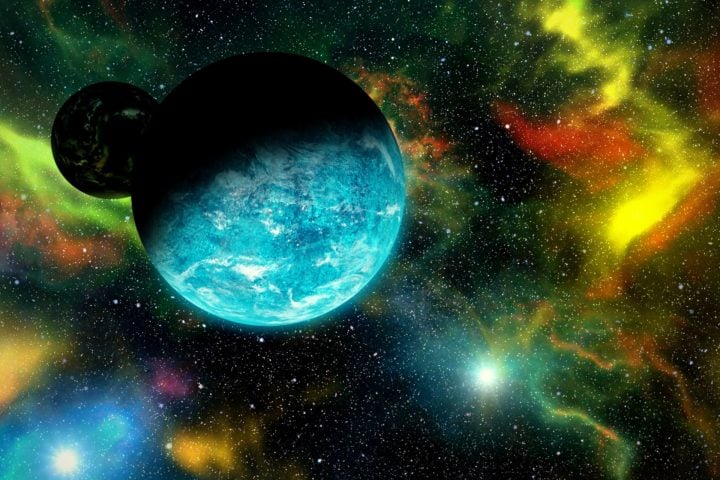A rare star system with six exoplanets has been discovered with an architecture unchanged for billions of years.

Exoplanet – illustrative photo. Image credit: Pixabay (Free Pixabay license)
The star, HD110067, that is 100 light-years away in the northern constellation of Coma Berenices, has been perplexing researchers for years. Now scientists, including those at the University of Warwick, have revealed the true architecture of this unusual system using NASA and ESA spacecrafts.
The first indication of planets orbiting the strange star system came in 2020, when NASA’s Transiting Exoplanet Survey Satellite (TESS) detected dips in the star’s brightness that suggested planets were passing in between the star and the TESS spacecraft. A preliminary analysis revealed two possible planets. One with a year (or an orbital period – the time it takes to complete one orbit around the star) of 5.64 days and another with an unknown period at the time.
Two years later, TESS observed the same star again. Analysing all data ruled out the original interpretation but presented two additional possible planets, changing the picture of the planetary system completely.
Much was still unknown about the planetary system, and that was when Rafael Luque of the University of Chicago and scientists across the world – including those at the University of Warwick – joined the investigation. They used data from the European Space Agency’s (ESA) CHaracterising ExOPlanet Satellite (CHEOPS), hoping to determine the orbital periods of these faraway planets.
The CHEOPS data was key in confirming a third planet in the system and the team had found the key to unlocking the whole system. It was now clear that the three planets were in a pattern of orbits known as an ‘orbital resonance’. For example, an outer planet takes 20.52 days to orbit, which is extremely close to 1.5 times the orbital period of the next planet with 13.67 days. This in turn is almost exactly 1.5 times the orbital period of the inner planet, with 9.11 days.
Thomas Wilson, Department of Physics, University of Warwick, said: “By establishing this pattern of planet orbits, we were able to predict other orbits of planets we hadn’t yet detected. From this we lined up previously unexplained dips in starlight observed by CHEOPS and discovered three additional planets with longer orbits. This was only possible with the crucial CHEOPS data.”
Orbitally resonant systems are extremely important to find because they tell astronomers about the formation and subsequent evolution of the planetary system. Planets around stars tend to form in resonance but can easily have their orbits thrown around.
For example, a very massive planet, a close encounter with a passing star, or a giant impact event can all disrupt the careful balance. As a result, many of the multi-planet systems known to astronomers are not in resonance meaning that multi-planet systems preserving their resonance are rare.
“We think only about one percent of all systems stay in resonance,” explains Rafael Luque. That why HD110067 is special and invites further study. “It shows us the pristine configuration of a planetary system that has survived untouched.”
“As our science team puts it: CHEOPS is making outstanding discoveries sound ordinary. Out of only three known six-planet resonant systems, this is now the second one found by CHEOPS, and in only three years of operations,” says Maximilian Günther, ESA project scientist for CHEOPS.
HD110067 is the brightest known system with four or more planets. Since those planets are all sub-Neptune-sized with likely larger atmospheres, it makes them ideal candidates for studying the composition of their atmospheres using the NASA/ESA/CSA James Webb Space Telescope and the ESA’s future Ariel telescope. Whereas ESA’s upcoming PLATO telescope, due to be launched in 2026, within which the University of Warwick is playing a leading role, could find planets in this system with even longer years.
Thomas Wilson added: “All of these planets have large atmospheres – similar to Uranus or Neptune – which makes them perfect for observation with JWST. It would be fascinating to test if these planets are rocky like Earth or Venus but with larger atmospheres – solid surfaces potentially with water. However, they are all much hotter than Earth, 170-530 degrees Celsius, which would make it very difficult for life to exist.”
“A resonant sextuplet of sub-Neptunes transiting the bright star HD 110067” by R. Luque et al. is published in Nature today. DOI 10.1038/s41586-023-06692-3
Source: University of Warwick

